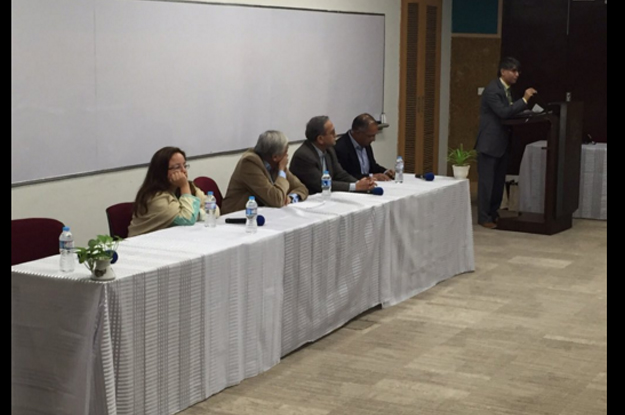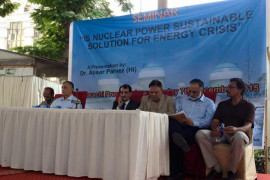
Speaking at a seminar, titled 'Environmental Fallout: Nuclear Power Plants in Pakistan' at Habib University, Dr Parvez said that one has to consider all available options to produce energy. It is important to understand that the other means of energy production have more adverse environmental affects, he added.
Parvez believes that the consequences of energy production with nuclear plants are fewer, but are concentrated and focused. According to him, in Pakistan the requirement of energy will be of 70,000 megawatts (MW) by 2030, out of which nuclear plants will provide only 8,000 MW, he added. "The remaining 62,000 MW can be produced by other means," he explained.
Institute of Business Administration Karachi (IBA) urban studies assistant professor Dr Nausheen Anwar said that once the nuclear plants have been built, they cannot be changed. However, she said that the infrastructure of such plants is fragile and asked if a breakdown ever happened, what would the residents living around it do? "We need technological advancement and also to [consider] the stake of the communities living nearby," she said.
Referring to Japan's Fukushima disaster, former Lahore University of Management Sciences (LUMS) physics professor and anti-nuclear campaigner Dr Abdul Hameed Nayyar said that after the incident took place, the Japanese government spent billions of dollars for mitigation. However, he added that in Pakistan, such amounts were never considered while calculating the amount of electricity being produced through nuclear power plants.
According to Nayyar, the Environmental Impact Assessment (EIA) that has been submitted by the PAEC says that in case of an accident, the radiations could never breach the walls of the plant. He insisted on preparing an evacuation plan in case such an accident occurred and said, "You have to consider the impact of release of radiation on the population and have a plan ready for evacuation." Referring to the Fukushima incident, Nayyar said that there was an evacuation plan but for Karachi there is no such plan.

Architect Arif Belgaumi talked about what would happen, if ever the country was at war. According to him, the easiest way to cripple Karachi was to hit the nuclear plants.
To all this, Ansar responded that there were more than 60 nuclear plants being constructed in other countries. "China alone is constructing 28 nuclear plants," he said, adding that one cannot rely solely on solar energy.
Ansar said that the technology that they were using to build nuclear plants was of generation three, which was a thousand times better than that of generation two. He said that in the worst possible situation, they would have to evacuate people living within 11 kilometres. "In other countries, where generation two plants are being run, they have three- to seven-kilometre evacuation plans," he said.
Published in The Express Tribune, December 14th, 2015.





































COMMENTS (3)
Comments are moderated and generally will be posted if they are on-topic and not abusive.
For more information, please see our Comments FAQ